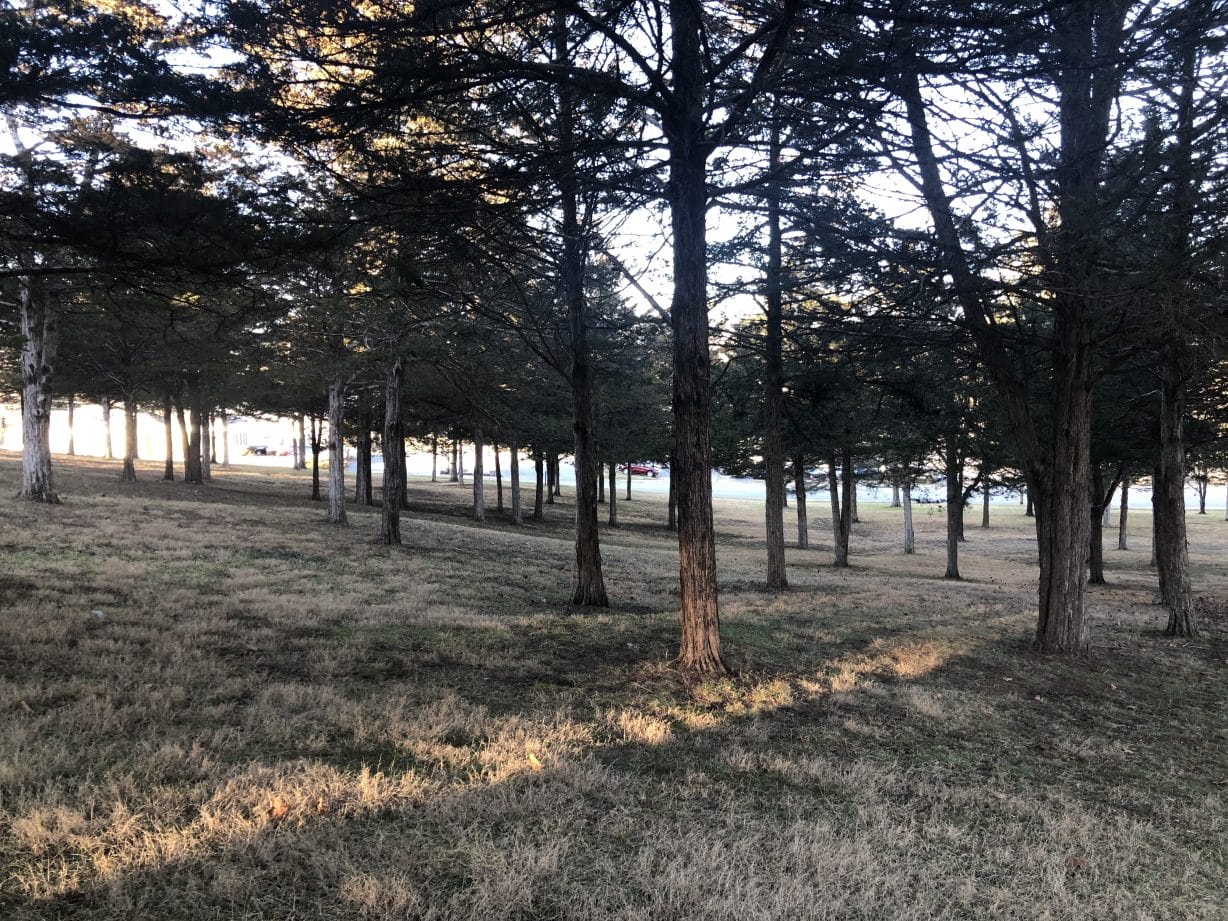
By Sofia Samatar
“The Friendly City” is a weekly column about walking in Harrisonburg that will run during 2024. Each week, your friendly correspondent, writer and teacher Sofia Samatar, will reflect on a walk in our city.
If you cross the bridge at Green Angel Park and climb the hill, you will enter the Wood Between the Worlds.
Such silence. The street sounds dwindle as you ascend. Market Street runs below, forming the border of the wood: peering down there you can see cars passing, the glint of the Food Maxx grocery store. But you are under these trees.
In the children’s book The Magician’s Nephew, by C. S. Lewis, two children enter a magic wood. They call it the Wood Between the Worlds because it’s an in-between place, a portal to a variety of worlds, including our own. “It was the quietest wood you could possibly imagine,” Lewis writes. “There were no birds, no insects, no animals, and no wind.” The wood is a sort of non-place, with no action and no real character. Yet it’s deeply alive. “You could almost feel the trees growing.”
I call this slope at Westover Park the Wood Between the Worlds for these qualities: stillness, silence, and symmetry.
Like the enchanted transit zone in the children’s story, our wood is made up of straight trunks and level, manicured grass. It’s not a wild place by any means. The ground is clear, the trees identical tall evergreens, evenly planted like pillars in some fantastical piece of architecture, their shadows recalling the striped walls of the palace of the Alhambra in Spain, and perhaps, I think, this is what creates such a strong impression of silence: the sense that one is inside some vast hall. For the wood is not really soundless. Under the trees I can hear the traffic, small birds twittering, including my favorite, the rapturously musical cardinal, a plane going by overhead, a small plane, maybe one of the ones our cousin flew when he worked for the nearby aircraft company, and then, far off but clear in the chilly February air, the lonely lamentation of the train.
The note of the train is the most mournful sound! How it floats across the city, bearing its insistent message of farewell. I love that the train goes through the Friendly City, even if I can’t have my dream of a local passenger stop. The call of the train is a childhood sound for me, because even though I moved often as a child, I never lived far from a railroad track. In the little towns where I grew up, the little town where I used to go to visit my aunt, the little town where I live now—in all of these places you can hear the train. That grieving, fading whistle suggests continuity even as it announces departure. It gives rise to the startling thought that I’ve never moved at all, that the little towns where I’ve lived are all the same town, a place where the air is shaped by these sound waves, imprinted with this passing cry.
In its effect on the imagination, the sound of the train is a portal to other places and times: an auditory Wood Between the Worlds.
Walking uphill, I step on the stony bits to avoid the mud. There’s no one around but a young boy walking his dog. The pavilions with their picnic tables are fast asleep, waiting for the weekend. I decided to write about walking in the city because, in the course of my wandering life, I had never lived anywhere for more than five years in a row, and now I’ve lived in the Friendly City for seven years. Seven years! A magic number. It seemed to call for some ceremony. In writing these notes, I invoke the spirit of these streets where I’ve lived longer than anywhere else. Celebrating a place, I’m also celebrating time.
In the Wood Between the Worlds, there is no time. Life gathers, richly abundant, but doesn’t move. There is no change. Or perhaps it only appears that way to the children in the story. Who are we to tell the time of trees?
I walk along the top of the ridge, near the chain-link fence, where I can peep over a steep slope covered with rougher, tumbled vegetation—the crackling, undisciplined forest on the other side of the park. I remember the first time I walked here, how exciting it was to feel like I was hiking. Here was a piece of the forest in the middle of the city! Up in the mountains, in the national park, there’s a greater and deeper forest, but that’s too far for me to go on foot. I’ll take the fragments of woodland I can find here, where a few steps carry me into resin-scented air. I’ll breathe in, eagerly, impatiently, this silence that isn’t really silence, the curiously muffled aura of the trees. For as long as I’m here, I’ll embrace the zone where the urban meets the wilderness. The Friendly City, my Wood Between the Worlds.
